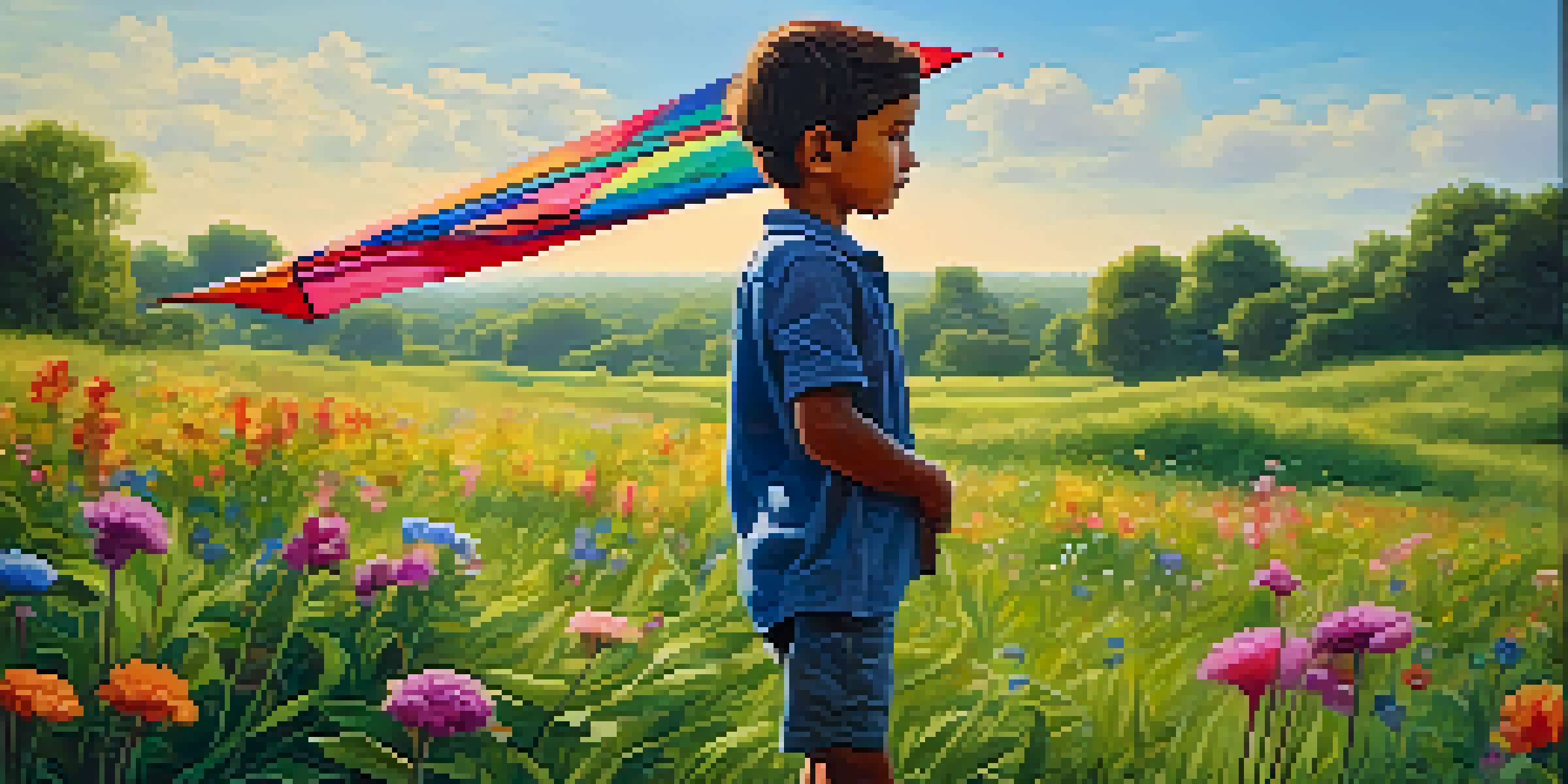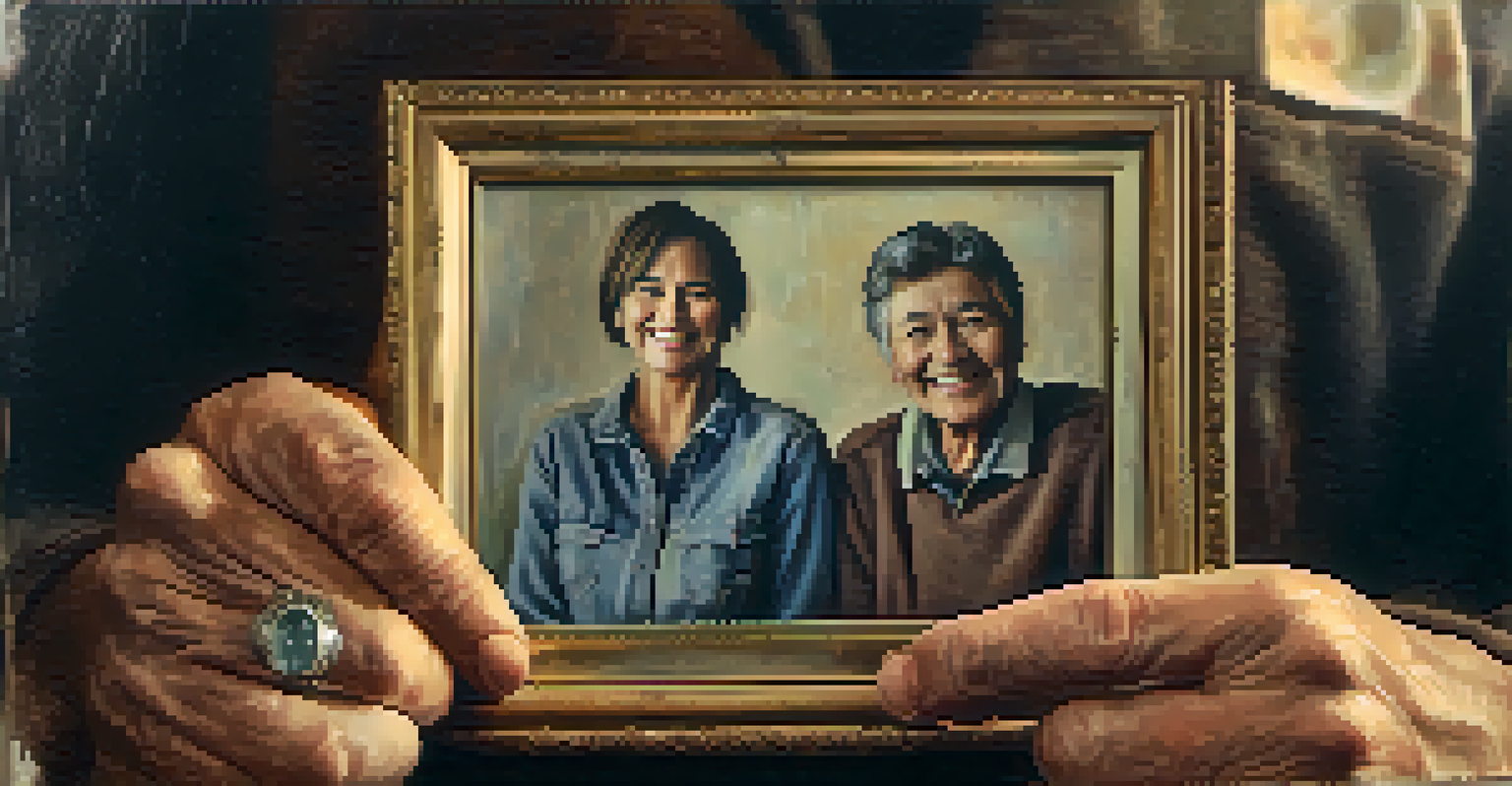Visual Storytelling: The Representation of Refugee Experiences

Understanding Visual Storytelling and Its Importance
Visual storytelling combines images and narratives to convey powerful messages. By using illustrations, photographs, or videos, it can evoke emotions and foster understanding in a way that words often cannot. This method is particularly effective in sharing complex experiences, such as those of refugees, who often face unique challenges and hardships.
A picture is worth a thousand words.
When we think of storytelling, we might envision a book or a movie. However, visual storytelling transcends traditional formats, creating an immediate connection with audiences. It allows viewers to engage with the subject matter on a deeper level, enabling empathy and a broader perspective on the refugee experience.
In a world flooded with information, visual storytelling stands out by simplifying complex narratives. It’s a way to bridge the gap between different cultures and experiences, making it an essential tool for raising awareness about refugee issues in a relatable and impactful manner.
The Power of Imagery in Portraying Refugee Lives
Images have the unique ability to capture moments that words often struggle to describe. For refugees, a single photograph can encapsulate their journey, emotions, and struggles. Visuals can portray the despair of leaving home, the hope of seeking safety, or the joy of finding a community, all in a single frame.

Consider the difference between reading about a refugee's plight and seeing a photograph of their situation. The latter can ignite compassion and drive action. When people see the reality of these experiences, it often leads to a stronger emotional response and a desire to help.
Visual Storytelling Evokes Empathy
Visual storytelling uses images and narratives to create emotional connections and foster understanding of complex refugee experiences.
Moreover, the imagery used in visual storytelling can challenge stereotypes and reshape narratives surrounding refugees. It encourages viewers to look beyond statistics, seeing the individuals behind the numbers and humanizing their experiences.
Documentary Films: A Lens on Refugee Experiences
Documentary films serve as a powerful medium for visual storytelling, often providing an in-depth look into the lives of refugees. They weave together interviews, personal stories, and visually striking imagery to create a narrative that resonates with audiences. This format allows viewers to not only see, but also hear the voices of those affected.
Art enables us to find ourselves and lose ourselves at the same time.
For instance, documentaries like 'Human Flow' and 'The Last Refuge' have brought significant attention to the global refugee crisis. By presenting real stories, they create a sense of urgency and compassion, prompting viewers to consider their roles in addressing these issues.
Documentary films also have the ability to reach diverse audiences, transcending language and cultural barriers. They can inspire activism and foster community engagement, showcasing the resilience and strength of refugees while highlighting the need for support and understanding.
Photography as a Tool for Advocacy and Awareness
Photography plays a crucial role in advocacy by capturing poignant moments that tell a story. Photographers often immerse themselves in refugee communities, documenting their daily lives and struggles. These images can serve as a powerful reminder of the ongoing challenges faced by displaced individuals around the world.
Through visual campaigns, photographers can mobilize support and raise awareness about refugee issues. For example, platforms like 'Refugee Photography' focus on showcasing the work of those who photograph refugee lives, amplifying their stories and experiences.
Photography Mobilizes Advocacy
Photography serves as a powerful advocacy tool by capturing poignant moments that raise awareness and support for refugee issues.
Moreover, photographs can be shared widely on social media, creating a ripple effect that reaches a global audience. This democratization of storytelling allows for a greater diversity of voices and perspectives, ensuring that the narrative surrounding refugees is multifaceted and representative.
Art as a Medium for Healing and Expression
Art has long been recognized as a therapeutic outlet, and for refugees, it can be a vital means of expression. Many artists use their craft to convey their experiences, emotions, and cultural backgrounds, providing a voice to those who may feel silenced. This creative process can foster healing and resilience in the face of trauma.
For example, community art projects involving refugees often encourage collaboration and connection. These initiatives not only allow individuals to share their stories but also promote understanding and empathy among participants and viewers alike.
Art exhibitions showcasing refugee experiences can also serve as a platform for advocacy. By displaying powerful works, these exhibitions can challenge perceptions, educate the public, and inspire action towards supporting displaced individuals.
The Role of Social Media in Visual Storytelling
Social media has transformed the landscape of visual storytelling, providing a platform for refugees to share their stories directly. Through posts, videos, and live streams, individuals can offer real-time insights into their experiences, fostering a sense of community and support. This immediacy can help humanize the refugee crisis in a way that traditional media may not achieve.
Hashtags like #RefugeeStories and #WithRefugees have gained traction on platforms like Instagram and Twitter, allowing users to connect and engage with these narratives. Social media not only amplifies voices but also invites conversation and action, encouraging followers to learn more and get involved.
Social Media Amplifies Refugee Voices
Social media platforms enable refugees to share their stories directly, fostering community engagement and driving action to support their plight.
Additionally, many organizations use social media campaigns to raise awareness and gather support for refugees. By sharing compelling visual content, these campaigns can reach wider audiences, driving home the importance of solidarity and action in addressing refugee challenges.
Fostering Empathy Through Visual Narratives
At the core of visual storytelling is the ability to foster empathy. When viewers are presented with authentic narratives and images, they are more likely to connect with the human experience behind the refugee label. This emotional connection can break down barriers and encourage compassion.
Consider how a well-crafted visual story can challenge preconceived notions. It invites viewers to step into someone else's shoes, experiencing their joys, fears, and aspirations. This process of understanding can lead to more informed and compassionate responses to the refugee crisis.

Ultimately, visual narratives remind us of our shared humanity. They encourage us to look beyond borders and see the individual stories that unite us, prompting action that can lead to positive change for refugees around the world.